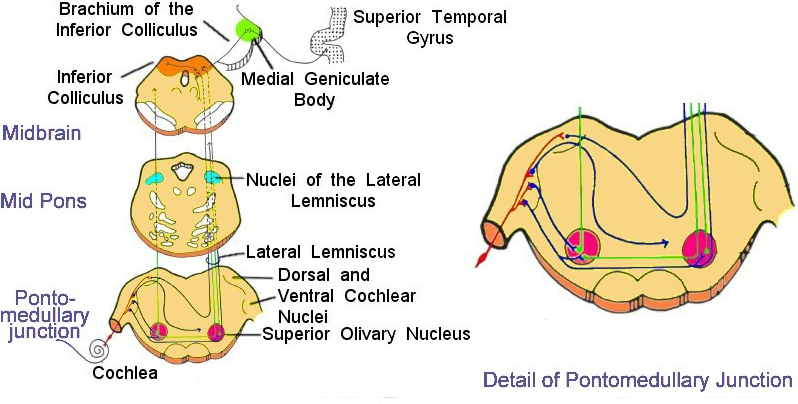Lab 7 (ƒ6) - Auditory, Vestibular, Gustatory and Olfaction Systems
The Auditory System
The 1° afferents from the spiral ganglion terminate in the cochlear nuclear complex (consisting of the dorsal and ventral cochlear nuclei). These 2° afferents give rise to axons that either cross the midline in the trapezoid body or remain uncrossed (see detail of medulla in figure). Many of the 2° afferents (both crossed and uncrossed) terminate in the superior olivary complex (purple in figure). The axons of the 3° afferents may join those of 2° afferents that did not end in the superior olivary complex to form the lateral lemniscus. Some of the fibers in the lateral lemniscus terminate on 4° afferents within the nuclei of the lateral lemniscus. The axons of these 4° afferents rejoin the lateral lemniscus.

The lateral lemniscus goes on to terminate in the inferior colliculus. The cells of the inferior colliculus give rise to axons that ascend in the brachium of the inferior colliculus to the medial geniculate body of the thalamus. The axons of the medial geniculate body travel in the sublenticular division of the internal capsule to terminate in the superior bank of the superior temporal gyrus.
The superior olivary nucleus begins at the pontomedullary junction, gets displaced posteriorly by the pons tegmentum as we travel rostrally and ends before mid pontine levels, just lateral to the central tegmental tract.
